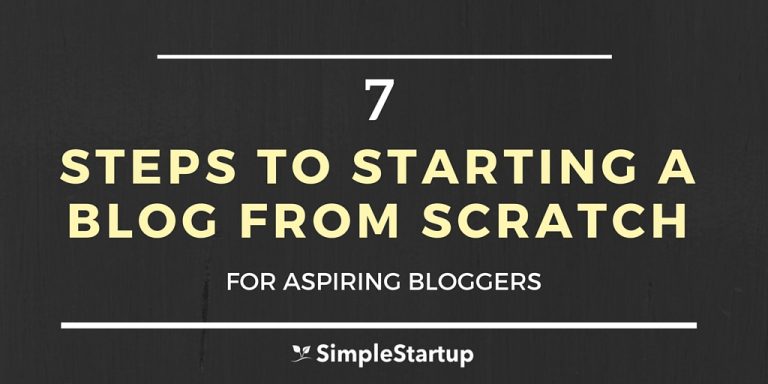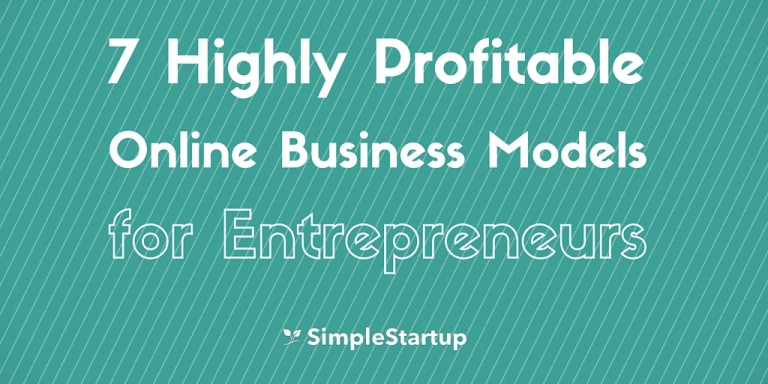Writing a business plan doesn’t have to be boring or complicated.
And it certainly doesn’t have to be long.
In fact, the longer your business plan, the less likely you will use it.
And a business plan is meant to be used. It’s meant for you to make use of and revisit often. It’s not something you create once and store in some remote part of your hard drive.
If you have been avoiding creating a business plan because you find it overwhelming, tedious and time consuming, then I want to introduce you to the simple 7 steps to writing a business plan on a single page.
Yes, a one-page business plan; a simple business plan.
Writing your business plan on a single page can be much less daunting and something you can easily use and modify as needed.
It’s a much more efficient and faster way of writing a business plan — one that you will actually use — and won’t take a lot of time or effort on your part as a traditional business plan.
So don’t waste too much time starting a business plan, and start with the following 7-step plan to developing a business plan from scratch for your online business.
Step 1: Know Your Target Audience
If you’re going to create a product or service that people want to buy, then you’re going to have to first understand the needs of your customer — their fears, frustrations, challenges and desires.
If your customer doesn’t have a need for your product, then there is no point in creating it in the first place.
But that is exactly what many aspiring entrepreneurs will do. They will often spend months and sometimes even years developing a product or service that no one has any interesting in buying. This is probably the most inefficient way to create a sustainable business that will create real results.
Instead, it’s better to get input and feedback from your customer while developing your product.
First ask at least 5-10 prospective customers or clients what challenges they are facing and if they have a need for your solution. If not, keep digging deeper until you have something they might be interested in buying.
Armed with this knowledge you will find it much easier to develop your solution.
Step 1b: Create an Ideal Customer Profile
You probably already know the importance of demographics (age, gender, location, etc.), but what many entrepreneurs often overlook are factors like customer interests, buying behavior, etc. Knowing these things may seem trivial, but it’s extremely insightful to have this data at your disposal.
For example, if you do any sort of advertising on Facebook, then knowing your audience’s interests can help you target the right people. If you are going solely on basic demographics, then you won’t be targeting your ideal customer and will end up paying more for traffic.
To find out who your ideal target audience is you can use tools such as quantcast.com and facebook graph search. These tools will give you little known insights about your consumer — their interests, household income, purchasing behaviour, etc.)
Once you create a basic profile of your target audience, then you will be in much better position to create a solution that they will be interesting in buying.
Step 2: Know Your Competitors
If you don’t know who your competitors are, then it’ll likely be an uphill battle to become relevant in your industry.
One of the most important first steps you can take is to identify your top 5 competitors and study their business — their products, services, pricing, sales funnel etc.
Once you’ve identified your primary competitors, then it’ll be much easier to find a way to differentiate yourself from them (step 4), as well as knowing how to price your products, what solutions to develop and creating your sales funnel.
There is no point in re-inventing the wheel if something is already working for your competitors. All you need to do is create better products and services, offer something they aren’t offering (such as a better guarantee, lower prices, more value, etc.).
This way you’ll be much more likely to create a business that has been proven to work and your job is to develop the best possible products and services for your clients and prospects.
Step 3: Develop a Simple Solution
If you’re going to develop a product (solution) centered around customer’s problems or needs, then it’ll be much more useful to think about creating your solution with the bare minimum features that will solve their problem.
It’s important to realize that you won’t build a perfect product the first time around. And you certainly won’t develop a perfect product without any input from your ideal customer.
So when developing your product or service, first focus on creating a minimum viable product (MVP), which is a bare minimum product that your customers be willing to pay you for (even if it doesn’t have all the bells and whistles).
Once you create and test your MVP in the market place, you will know if there is demand for your product or service, and you can go onto developing version 2.0, 3.0 and so on. By the 3rd or 4th iteration your product will start to look much more polished and something your customers will be lining up to buy (they’re the ones that helped you build it!)
So initially, when writing down your solution on your business plan, think of the top 1-3 features that your product will have that will solve the problem.
For example, if many of your prospective customers problem are finding it challenging to stay motivated and consistent with their diet and exercise routine, then you can create a solution that includes an online community or personal online coach that will help them stay on track and break through any barriers when they lose focus.
It important to create your solution around their needs and only include the minimum set of features that will capture their interest in trying out your services. As you learn more about your customers and get their feedback, you can start to add more features if needed as your product or service develops.
Step 4: Create your USP
The reason why many startup entrepreneurs fail to gain any traction in a competitive marketplace is because they don’t have anything that differentiates them from their competition. Too often they are simply copying what’s already out there, instead of uniquely position themselves to give themselves an upper hand on their competition.
You can do create this unique positioning by creating what’s known as a unique selling proposition. It’s the answer to the question, “what do you do differently then your competition?”.
A lot of entrepreneurs will simply say things like, “we’re better, we’re faster, we’re high quality, etc”. But anyone can claim that they are better, faster and higher quality. It’s not enough to call yourself these things.
Instead, it’s much more effective to offer something that your competition won’t be able to copy that easily. And if they do, it may affect their bottom line since they can’t offer it the way that you do.
For example, many business owners won’t give a money-back guarantee if the customer isn’t satisfied. And even if they do, it will only be for 30 days. So if everyone in your market place is offering a 30 day guarantee, then why not offer 60 days, 90 days, or even 365 days?
A lot of entrepreneurs would fear that they will lose money because a customer has more time to refund their products, but in fact the opposite is true. If you create a quality product that actually delivers results for the customer or client, then they will most likely stick around long term. They will appreciate that you have placed enough trust in them to provide them with that sort of guarantee and in turn will trust you even more.
So when creating your USP, think in terms of what you can do differently than what’s already being done by every other competitor out there.
Is there something they are not offering that you can offer? Can you deliver results faster than your competition? Is your customer service experience better than theirs in terms of quality and responsiveness (i.e available 24/7 or with reply within 3 hours?)
Step 5: Know Your Pricing
When creating your first product or service, it can be challenging to know how to price it. A lot of times entrepreneurs will simply guess what is the ideal price point for their product and will pricing it accordingly.
However, instead of guessing, why not first see what prices your competitors are using, and then use that as a starting point.
Once you have your starting price, the next step would be to test 3 different price points for each product. This way you can determine which price point is ideal and settle on the sweet spot.
It’s important to note that your pricing also depends on how well you position your product and build value on your sales pages. If you don’t do a good job of building value and interest, then it won’t matter how low you price your products — people simply won’t buy them.
But if you do a good job of conveying that value on your sales pages, then you may even be able to price your products much higher than your competition — especially if you do things they don’t as described in Step 3.
Step 6: Choose a Marketing Channel
Knowing which platforms you’re going to use to create awareness about your products and services is very important when launching your business.
There are many ways to market your product, so it’s important to pick the one best suited for your business.
Choosing the right marketing channel doesn’t have to be complicated. You simply need to find out where your ideal target audience congregates or hangs out (as determined in Step 2), and use that as your starting point.
It’s usually a good idea to start marketing on one platform before moving on to the next. You don’t need to be on all platforms. For example, if you’re primary channel is social media, then pick one (twitter, linkedin, facebook, etc.). If you find that most of your customers are on Facebook, then create a Facebook Page and start using this platform as your primary marketing medium.
Here’s a list of some marketing channels:
- SEO
- Social Media
- Ads (Google Adwords, Facebook Ads, Bing Ads)
- Guest Posts
- Banners
- Joint Ventures
Step 7: Know Your Business Model
When starting your business, it’s important to know how you’re going to monetize. Knowing your business model answers the question, “how do I make money?”
There are many business models to choose from, but it’s important to identify and select the one that will make the most sense for you and has the greatest ROI.
For example, if you’re an online instructor, then it make sense to utilize the membership/subscription model as your primary business model.
Or if you’re going to be blogging, then it might make sense to use advertisements and affiliate marketing.
And if you’re going to be podcasting, then it will make sense to get businesses to sponsor your show.
Here are some business models that you can integrate into your business:
-
Membership Site
-
Software
-
Done-For-You Service
-
Email Series
-
Newsletters
-
Group Coaching Calls
-
Teleseminars
-
Webinars
-
Coaching/Consulting
-
Service
-
Affiliate Marketing
-
Ads
-
Subscription/Membership
-
Software/App/Tools/Templates
-
Speaking
-
E-commerce
-
Physical Products
-
Books
-
Mastermind Programs
So as you can see, creating a business plan doesn’t have to be long and arduous. If you follow these 7 steps and write everything down on a single page you will have a business plan that will be easy to use. Once you go through these 7 steps, you’ll find that you not only have a solid business plan, but something you can use again and again.







